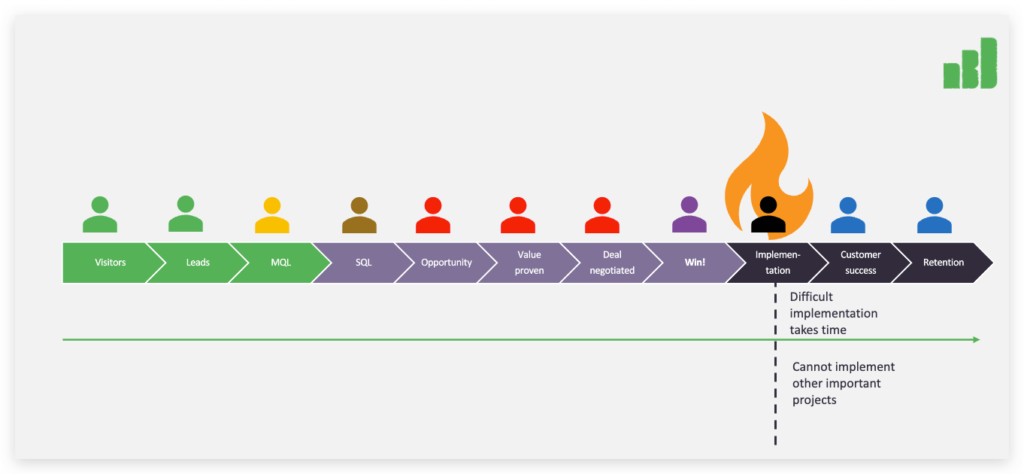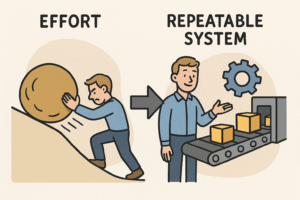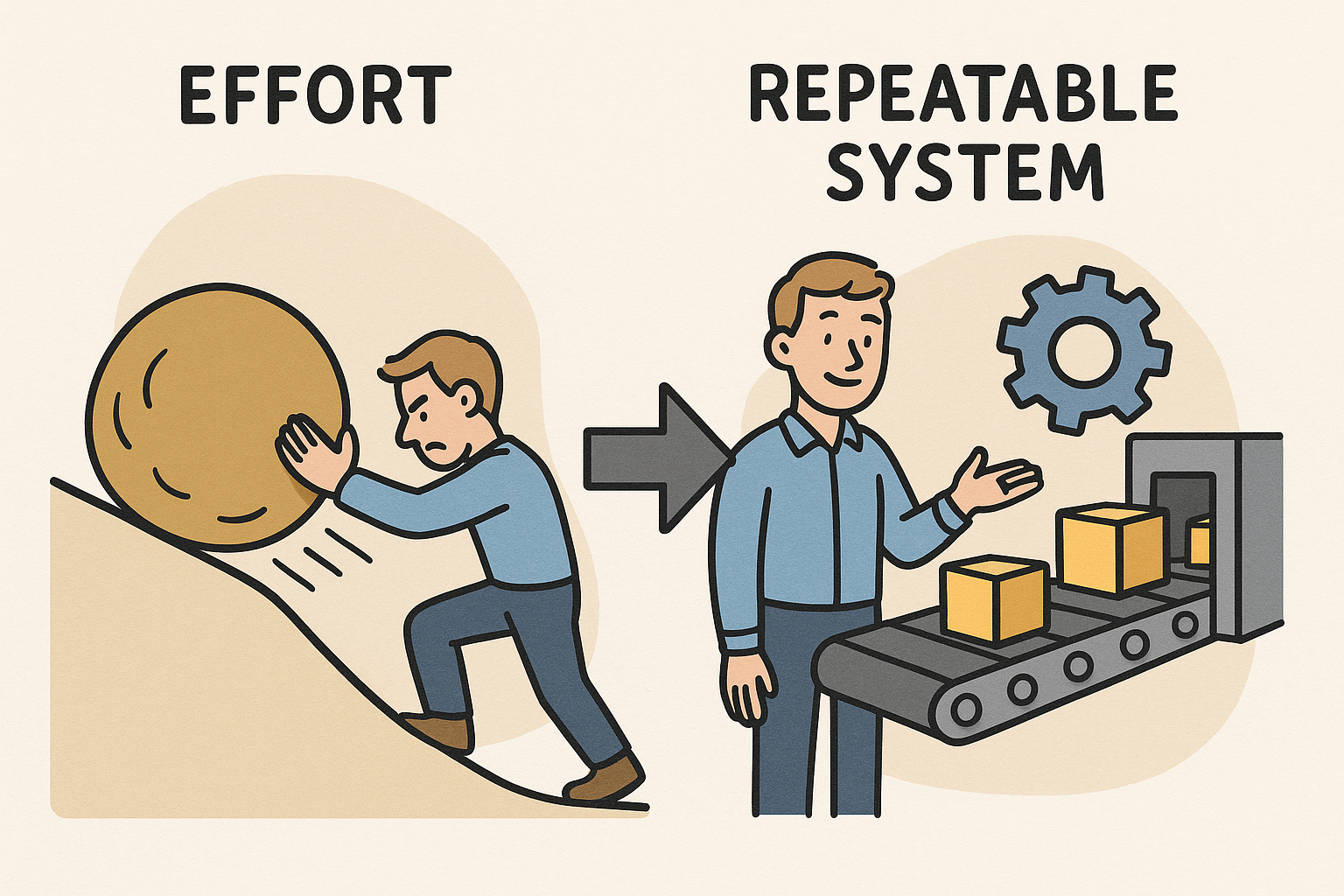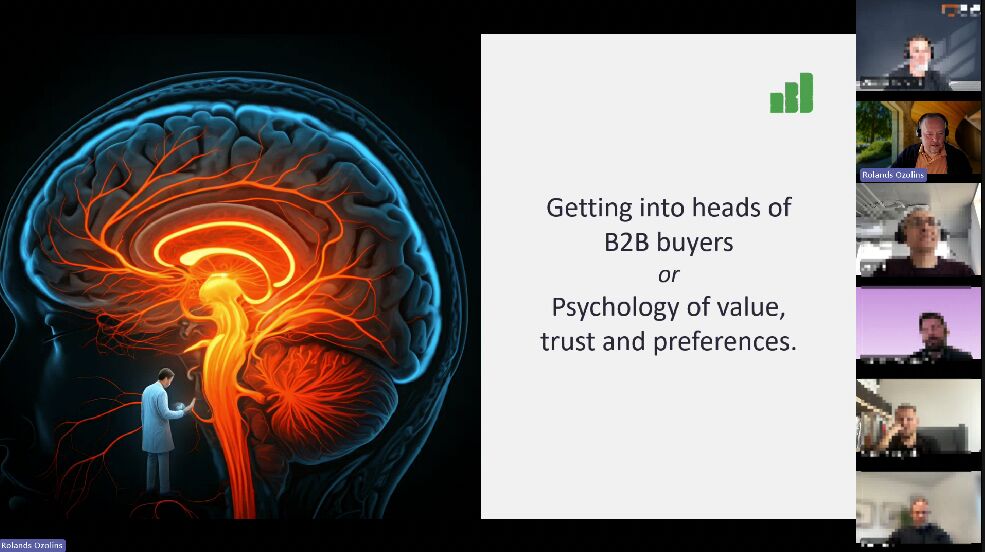It may be tempting for a small and growing tech company to please as many customers as possible.
However, this approach is utterly unproductive and may, in fact, ruin your business.
Let me explain.
If you are offering your services to a broad market, it means you limit your possibilities for deep specialization in certain market segments and understanding the specific needs of that segment.
In other words – the result of your work is far from world-class.
This made sense in the past in limited markets (such as small towns or even a smaller country). This may still work in the public sector, which is very relationship and trust-based.
You build your reputation as a can-do technology service company that can do everything, and customers keep flowing in.
However, because you do not specialize, you cannot deliver a truly world-class product.
As a result, the innovative potential of your work is inherently limited, and customers keep choosing your services out of familiarity or habit.
The projects you take to a large degree are unique, so you work on them as doing work the first time. Because of this, you lack experience in managing project risks and cannot provide all-inclusive upfront pricing, scope, and project plan. As a result, you risk project profitability and customer frustration due to being over budget and missing the timeline.
Naturally, the productivity of your work is limited, as possibilities for repeated processes are limited. You do many things as doing it the first time. Little, if any, economies of scale.
This is hardly sustainable in an always-connected, always-on world.
Your customers will likely find out that other vendors provide products that are better suited to their needs, easier to start using, and cheaper.
On top of that, they come with best-practice business processes, and vendors are not only providing technologies but also know how about customer-specific business processes.
I talk about typical SaaS products here.
So, what can your company do to stay relevant, efficient and grow its business?
I have advised tens of companies to do this if they want to switch gears and grow their business.
I recommend taking 3 step approach.
The first step, establish your area of specialization.
You must have delivered some specific project for a demanding customer in a specific industry, and you learned a lot. Try to put that know-how to use to create a product which provides unique and demonstratable value to that specific customer segment.
Develop the profile of your ideal customer (ICP – Ideal Customer Profile). List characteristics of your ideal customer: industry, size, technology use, financial situation, etc.
Do market research and see in which geographies your ICPs are located. Analyze your competition to see where you stand in terms of competition and whether your product has sufficient commercial potential.
The point here is to develop something special with a super strong value for your ICP without regard for other customers. In fact, you should not work with any customer outside of ICP if your goal is growth.
Second step – standardize your processes.
You must standardize your processes to sell and deliver your product in this step. You want to plan your buyers’ journey and split the work and responsibilities by each stage of the customer journey.
You want to seek automation possibilities and possibilities to use less qualified and less costly employees thanks to developing standard procedures.
You do this to make sure you can sell and implement your offerings at a large scale with minimum effort and costs.
In this step, you also seek as much customer feedback as possible to finetune your product and achieve product/market fit.
Again, you only care about finetuning processes to sell and deliver products for your ICP efficiently, and you refrain from selling and delivering your product outside your ICP.
Third step – scale out
Once you are close to product/market fit and can efficiently deliver your product, it is time to scale out and invest in further demand generation. At this stage, you need to carefully plan financials to allow for investments in demand generation with considerations for the length of the buyers’ journey and payback period.
Most businesses recoup their customer acquisition investments in periods exceeding a year, therefore, it is crucial to secure sufficient investment to cover this gap.
Focus on your standard product for ICP customers only
There is a good chance that you will generate demand from companies outside of your ICP profile. Perhaps some large companies everyone dreams of selling to will be asking for that small additional feature.
Do not sell outside of your ICP profile. Be extremely careful with non-standard feature requests. Any deviation may lead to unpredictable inefficiencies if you have developed your product and services around serving a specific market segment.
For example, your whole customer journey may be blocked if your support engineers are working night and day to please a super large customer that asked for this one small feature that turned out to be not working. As a result, perhaps hundreds of paying ICP customers cannot get timely support.
Tuning your business to serve standard products to ICPs and then deviating from this path is probably one of the fastest ways to ruin your business.

Conclusion
Technology offerings are increasingly shifting to an as-a-Service model. The same happens with customer expectations for low friction experience.
This model significantly reduces friction on the customer side and can be extremely profitable.
There are three steps to start growing your business with the as-a-Service offering.
- You have to specialize in delivering superb business value to specific market segments.
- After that, you need to standardize your processes to deliver products extremely efficiently
- You need to scale out once the product market fit is achieved.
Contact us if you need help in planning the transition to SaaS business.






